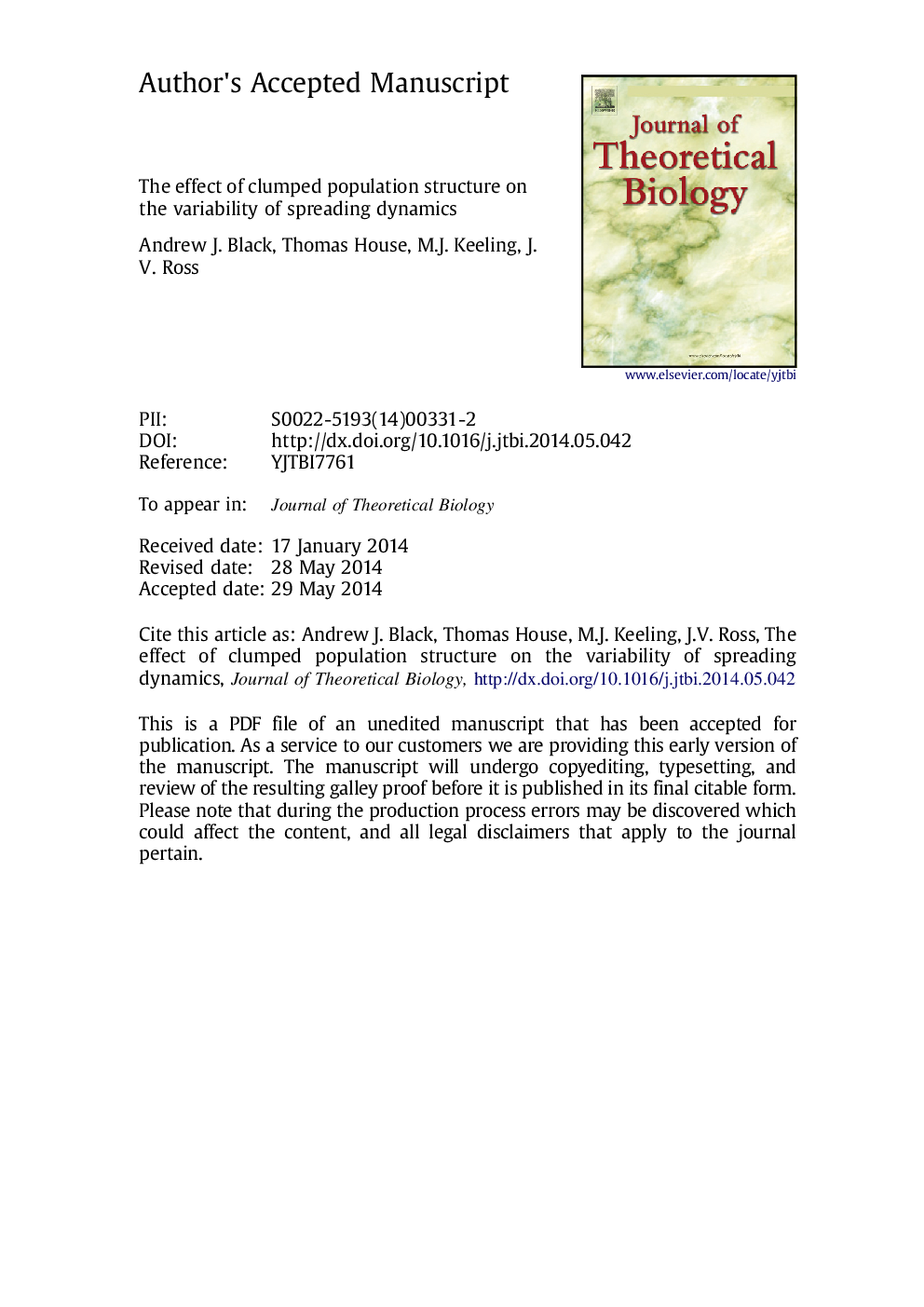| کد مقاله | کد نشریه | سال انتشار | مقاله انگلیسی | نسخه تمام متن |
|---|---|---|---|---|
| 6370321 | 1623851 | 2014 | 31 صفحه PDF | دانلود رایگان |
عنوان انگلیسی مقاله ISI
The effect of clumped population structure on the variability of spreading dynamics
ترجمه فارسی عنوان
اثر ساختار جمعیت جمع شده بر تغییرات پویایی گسترش
دانلود مقاله + سفارش ترجمه
دانلود مقاله ISI انگلیسی
رایگان برای ایرانیان
کلمات کلیدی
اپیدمی، پیوسته زنجیره مارکوف، توزیع فرزند، نزدیک شدن تقسیم،
موضوعات مرتبط
علوم زیستی و بیوفناوری
علوم کشاورزی و بیولوژیک
علوم کشاورزی و بیولوژیک (عمومی)
چکیده انگلیسی
Processes that spread through local contact, including outbreaks of infectious diseases, are inherently noisy, and are frequently observed to be far noisier than predicted by standard stochastic models that assume homogeneous mixing. One way to reproduce the observed levels of noise is to introduce significant individual-level heterogeneity with respect to infection processes, such that some individuals are expected to generate more secondary cases than others. Here we consider a population where individuals can be naturally aggregated into clumps (subpopulations) with stronger interaction within clumps than between them. This clumped structure induces significant increases in the noisiness of a spreading process, such as the transmission of infection, despite complete homogeneity at the individual level. Given the ubiquity of such clumped aggregations (such as homes, schools and workplaces for humans or farms for livestock) we suggest this as a plausible explanation for noisiness of many epidemic time series.
ناشر
Database: Elsevier - ScienceDirect (ساینس دایرکت)
Journal: Journal of Theoretical Biology - Volume 359, 21 October 2014, Pages 45-53
Journal: Journal of Theoretical Biology - Volume 359, 21 October 2014, Pages 45-53
نویسندگان
Andrew J. Black, Thomas House, Matt J. Keeling, Joshua V. Ross,
